When it comes to welding, there are several different methods to choose from. Each method has its own advantages and disadvantages, and the choice often depends on the specific application and the welder's preference. In this blog post, we will explore three popular welding methods: Stick, TIG, and MIG, and discuss their characteristics and uses.
Stick Welding: Simple and Versatile
Stick welding, also known as Shielded Metal Arc Welding (SMAW), is one of the oldest and most widely used welding processes. It involves using a consumable electrode coated in flux to create the weld. Stick welding is known for its simplicity and versatility, making it suitable for a wide range of applications.
One of the key advantages of stick welding is its ability to work well in outdoor and windy conditions. The flux coating on the electrode creates a protective shield around the weld, preventing contamination from the surrounding air. This makes stick welding a popular choice for construction sites and field repairs.
However, stick welding does have some limitations. It is not as precise as other methods and may produce more spatter. Additionally, it requires frequent electrode changes, which can slow down the welding process.
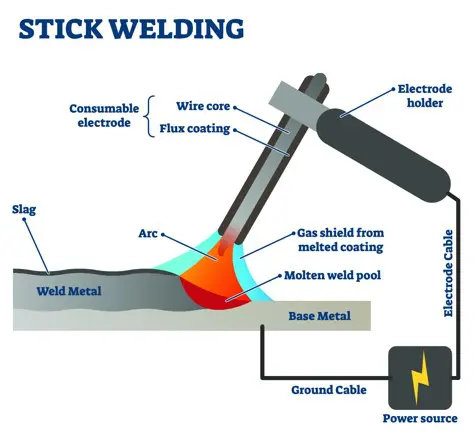
Image credit: https://fractory.com/shielded-metal-arc-welding/
TIG Welding: Precision and Cleanliness
Tungsten Inert Gas (TIG) welding, also known as Gas Tungsten Arc Welding (GTAW), is a precise and clean welding process. It uses a non-consumable tungsten electrode to create the weld, and a separate filler material is often added manually. TIG welding is commonly used for high-quality welds on thin materials.
One of the main advantages of TIG welding is its ability to produce clean and aesthetically pleasing welds. The heat input can be precisely controlled, resulting in minimal distortion and a narrow heat-affected zone. TIG welding is often used in industries such as aerospace, automotive, and jewelry, where appearance and quality are critical.
However, TIG welding requires a high level of skill and dexterity. It is a slower process compared to other methods, and the welder needs to manually feed the filler material. TIG welding also requires the use of a shielding gas, typically argon, to protect the weld from atmospheric contamination.
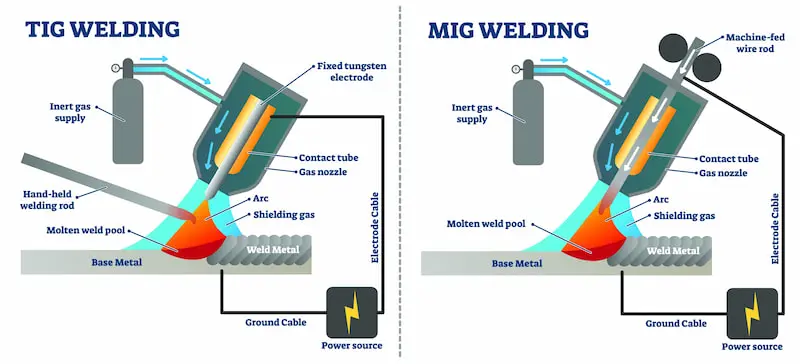
Image credit: https://fractory.com/mig-vs-tig-welding/
MIG Welding: Speed and Efficiency
Metal Inert Gas (MIG) welding, also known as Gas Metal Arc Welding (GMAW), is a fast and efficient welding process. It uses a continuous wire electrode and a shielding gas to create the weld. MIG welding is widely used in industries such as automotive, fabrication, and manufacturing.
One of the key advantages of MIG welding is its high welding speed. The continuous wire feed allows for faster deposition rates, making it suitable for large-scale production. MIG welding also produces less spatter compared to stick welding, resulting in cleaner welds and less post-weld cleanup.
However, MIG welding may not be suitable for all applications. It is more sensitive to wind and drafts compared to stick welding, and the shielding gas can be easily disrupted. MIG welding also requires a constant power supply and a welding gun, which adds to the equipment cost.
Conclusion
In conclusion, the choice of welding method depends on various factors such as the application, skill level, and desired weld quality. Stick welding is versatile and suitable for outdoor conditions, while TIG welding offers precision and cleanliness. MIG welding, on the other hand, provides speed and efficiency for large-scale production.
Ultimately, the best welding method is the one that meets your specific needs and preferences. Whether you prefer the simplicity of stick welding, the precision of TIG welding, or the speed of MIG welding, each method has its own unique advantages and can produce high-quality welds when used correctly.

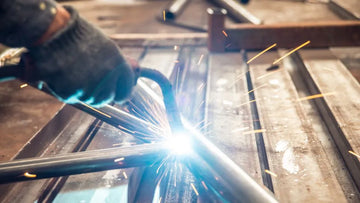


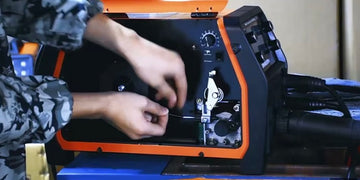
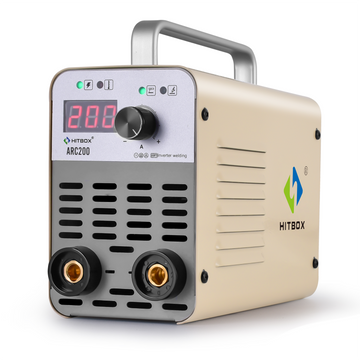
{0 Kommentare